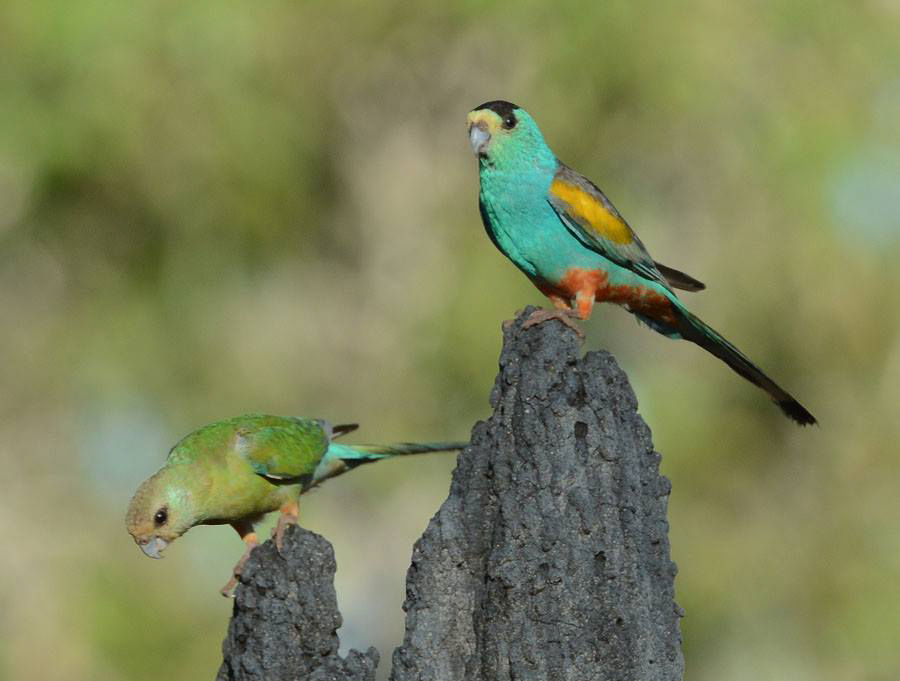Media release
From:
The endangered golden-shouldered parrot, a technicolour species native to Far North Queensland’s Cape York Peninsula, is abandoning areas of grassland it usually nests in because woody plants are encroaching upon its preferred vegetation.
Dr Gabriel Crowley, from the University of Adelaide, assessed the fate of 555 golden-shouldered parrot eggs from 108 nests monitored on Artemis Station by its owner, Susan Shephard, and Charles Darwin University researcher, Professor Stephen Garnett.
They discovered that the spread of woody plants increased the probability of predation, and reduced nest success and survival of nesting adults.
“The golden-shouldered parrot prefers to nest in areas of low woody-vegetation density, mainly along grassy drainage depressions,” says Dr Crowley, whose research was published in the journal PLOS One.
“We observed that they abandoned areas where woody plant encroachment was most advanced, which means it should be considered as a potential threatening process and managed accordingly.”
Grasslands are the world's most threatened terrestrial ecosystem, with vast areas disappearing because of the spread of urban and industrial development.
Maintaining remnant grasslands in good condition is therefore essential for the conservation of grassland-dependent species, such as the golden-shouldered parrot.
“In our study, nest success decreased as the density of trees around the nest increased,” says Dr Crowley.
“Most losses could be attributed to predation, with the numbers of both adults and chicks taken increasing with tree density.
“This effect was most pronounced for butcherbirds, which perch in nearby trees waiting for the birds to emerge from the nest. The parrots are therefore most likely to fledge successfully in open grasslands, where they are safe from woodland predators.”
Dr Crowley’s three decades of research has shown that the grasslands of Cape York Peninsula have been disappearing under woody plants since cattle grazing replaced management by First Nations Peoples.
“On Cape York Peninsula, grazing has reduced fuel loads and the frequency of fires needed to keep woody plant encroachment at bay,” Dr Crowley says.
While this study focused on the plight of the Cape York Peninsula’s golden-shouldered parrot, Dr Crowley says it is indicative of a problem seen around the world.
“Similar processes may explain the decline of grassland birds across the globe, including from African savannas and North American prairies,” says Dr Crowley.
“Grassland loss is also an issue in South Australia, where urban and industrial development, grazing and rabbits are the main threats. However, fire management is also an essential tool for maintaining the open structure of these systems.
“It is therefore important that we recognise that while uncontrolled wildfires can have a devastating effect on the environment, when used properly, fire has an important role in maintaining the health of many ecosystems.”
NOTE: For more on this research, see Dr Crowley’s article published in The Conversation.
The University of Adelaide and the University of South Australia are joining forces to become Australia’s new major university – Adelaide University. Building on the strengths, legacies and resources of two leading universities, Adelaide University will deliver globally relevant research at scale, innovative, industry-informed teaching and an outstanding student experience. Adelaide University will open its doors in January 2026. Find out more on the Adelaide University website.




 Australia; SA
Australia; SA


